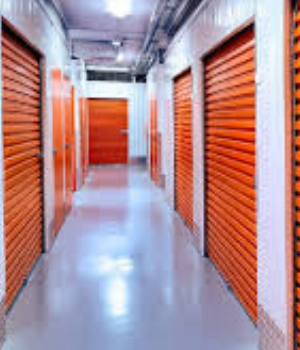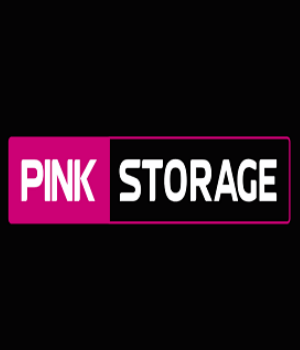Operating a self-storage facility that provides vehicle storage for boats, RVs and other “toys” differs from one that doesn’t. To put it simply, these renters expect more, and there are greater logistics to consider. Follow this guidance to run that side of your business successfully.
Self-storage facilities that provide vehicle storage have clients with unique needs. With the high price of boats, RVs, ATVs, jet skis, trailers and other similar “toys,” these owners are willing to pay handsomely for the products and services they require to protect their investment. When you provide them—and do it well—these tenants become long-term, profitable customers.
If you’re already offering vehicle storage or planning to add it to an existing or new facility, it’s important to understand that the operations for this niche are different than for traditional self-storage. You need to carefully consider everything from your lease to your site rules to your amenities and marketing. Following are some key areas on which to focus and insight to help you do it right.
Legal and Insurance:
When a customer moves in, pay special attention to the vehicle being stored. Make copies of the registration and insurance, and take photos. You’ll also need to add an addendum to your self-storage rental agreement that includes the vehicle-identification number and any other important information such as age and mileage, if known. If you offer any valet services that involve handling the movement, parking, or preparation of the vehicle, you’ll need additional releases and documents to keep yourself covered and limit liability.
Ask customers if any other vehicle will be parked in the space while they have their stored vehicle in use. It’s common for a user to park their day-to-day car while they take out their boat or RV. Gather information on this asset as well, as you don’t want unauthorized vehicles on site.
Though it’ll be a requirement for these tenants to have their own insurance coverage, you can also offer your tenant-insurance or protection program if the vehicle is stored in an enclosed unit rather than outside. Make sure you completely understand the program you offer so you can highlight its benefits and answer any questions your customers might have.
Site Rules:
Of course, your boat/RV-storage tenants will need to follow the same rules as customers who rent your traditional self-storage units; however, there are a few additional guidelines that’ll apply specifically to them. For example, you might give yourself the right to tow any unauthorized vehicles from the property. Get signs from a local towing company and post them throughout the site. New self-storage lien laws in many states also allow you to tow away authorized, stored vehicles after 60 days of nonpayment, so make sure you’re current on your local laws and lease terms.
Think through all the various scenarios that might arise due to vehicle storage and make sure they’re covered in your facility rules. For example, what are the access hours for these customers? People with boats and RVs typically need earlier and later access than self-storage customers. Will you allow tenants to dump trash from their vehicles? Will they use the same keypad and gate to enter the property as other customers, or will they have their own?
Amenities:
One way to attract and retain vehicle-storage customers is to offer amenities that cater to this crowd. For example, you might offer an electrical outlet or tap to each space, likely 30 amps, and overhead LED lighting. Also, consider adding dump and vacuum stations and a wash bay.
Concierge services is another perk you might provide. This can include prepping and cleaning the vehicle exterior, turning on the fridge, and driving the vehicle to the front of the property before the customer arrives. These things can be outsourced or accomplished in-house. Just be sure to check with your attorney and insurance company so you cover any possible liabilities.
You might also add specialty items to your retail store such as RV toilet paper, sewage hoses, ice and other supplies that might be in demand by these customers. Consider partnering with a local repair shop to provide referrals. You might even find someone who can deliver aftermarket installs, hitches and more.
Community Outreach and Referrals:
Community outreach is one of the best ways to drive demand for your vehicle storage and keep occupancy high. Plan personal visits to RV, boat and camper dealers in your community as well as apartment and homeowners’ associations to tell them about your service. You can also include repair shops. All these local businesses will be critical to the success of your program, so make some of these personal visits every week.
When you visit, deliver a gift bag containing a few treats along with your promotional items and some referral cards. Put everything in a cellophane bag with ribbons in your company colors. Walk in the door and say something like, “Hi, I’m your neighbor at Anne’s Self-Storage and RV Center. I’ve brought you some goodies.” This will get you in the door every time! It makes a big difference in their reaction and willingness to listen. Just don’t hand them a bunch printed brochures or fliers, as those’ll likely end up in the trash.
The ultimate goal is to generate referrals. Tell these folks about your vehicle-storage services and encourage them to send you potential customers by offering a $50 reward for each, which can be given in the form of a gift card or cash. Leave them with a stack of your business cards to hand out to prospects, and grab one of their cards, too, so you can add them to your email database.
Also, encourage referrals from your existing vehicle-storage renters, as they’ll likely have friends and family with similar needs. The best thing about these customers is they seem to share insider secrets. They frequently discuss tips and products while on the road and as they gather for events and vacations. Getting them to spread your message can be critical to your success.
Finally, consider offering a referral reward to your competitors! This may sound counterintuitive, but if their boat/RV storage is full or they don’t even offer the service, it can make perfect sense. Ultimately, their goal should be to help customers find what they need, even if it means sending them down the street to your facility.
Marketing:
When it comes to marketing your vehicle-storage facility, you must marry local and digital marketing. Allocate a reasonable amount of time and money for each. You’re trying to be seen where people are looking for your services. Here are some pointers:
Signage: If permitted in your area, add a sign along the front of your property to emphasize your vehicle storage. Better yet, use a digital sign so you can regularly update the messaging.
Website: This is a significant component of your marketing. You need a site that targets this group with words on which they’re likely to search such as “covered storage” or “enclosed RV parking” or “boat storage in your city.” Your website provider can help with this.
Advertising: A good pay-per-click campaign can net new rentals. Expect to spend from $800 to $2,500 per month depending on how many spaces you’re attempting to fill as well as what your competition offers and how wide a geographic area you’re targeting.
Billboards: These can be an effective strategy for this type of user and draw customers from a distance. My friend in Arizona has a large vehicle-storage facility right by a busy interstate. When he opened, he advertised on billboards as far away as 200 miles and filled 80% of his facility in a short time.
Billboards come at a higher price and are sometimes impossible to get. If you’re interested in this medium, start working on your campaign as soon as you can to get in line for what will or may become available. The best case would be to have one on your site or next to a freeway. Getting your message onto a digital billboard on the nearest major thoroughfare is great, too.
Social media: Use these platforms to capture and engage your audience. Publish regular posts and pictures of your facility and incorporate some paid advertising. Facebook ads are common, especially those that retarget prospects or current and past customers.
The ultimate goal is to build a focused marketing plan you can track and measure. Define each action and set specific goals. For example, decide how many visits to make to local businesses each week, emails to send, events to attend, contacts to add to your database, etc. Check the numbers each month and see how you did. By creating targeted campaigns expressing a clear message about your specialized service, including why your facility is the best choice and easy to do business with online and in person, you’ll generate awareness. The trick is to spend the right amount of time and money to garner traffic.
Plan the work and work the plan. Measure and track the effectiveness of any and every dollar you spend, then refine and adjust your goals based on what is and isn’t working. Continue to track customers at move-in by gathering all the details as to how they found you, how far away they live and other key demographics. These actions will help you continually improve your vehicle-storage message and service.
Worth It!
Even though operating vehicle storage can be a bit more challenging than self-storage alone, those who do it well enjoy great profit and customer loyalty. If you’re thinking about adding this specialty service to your existing business or new development, follow the guidelines above and you’ll reap the rewards.





